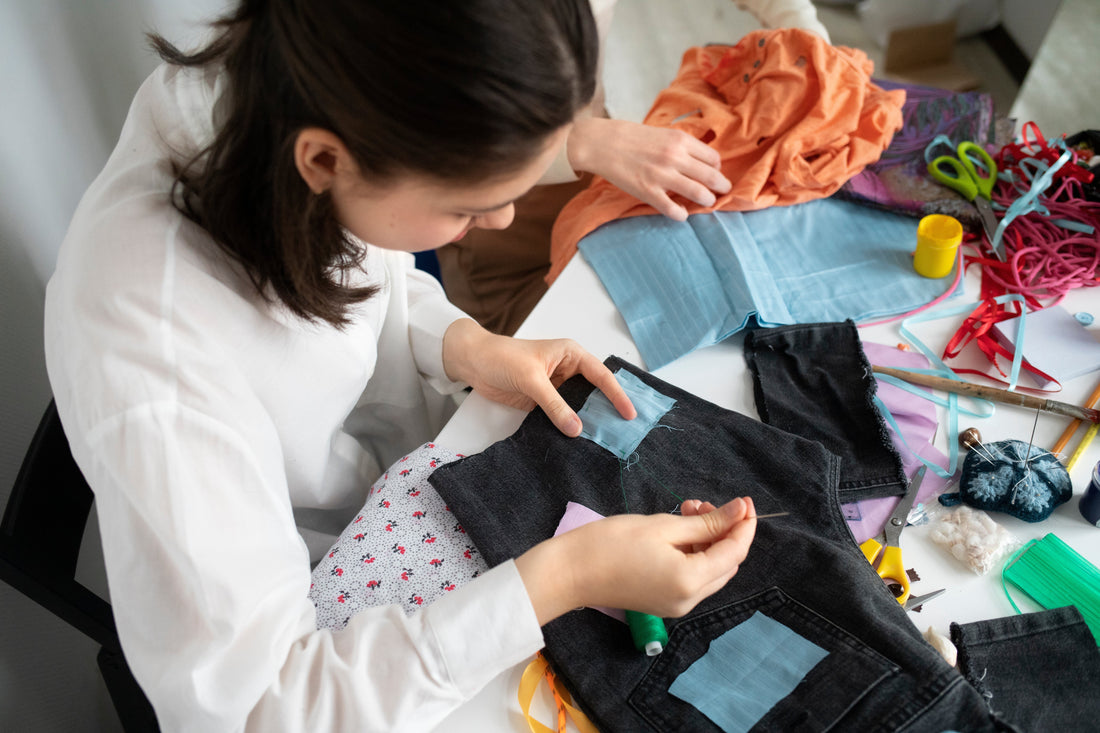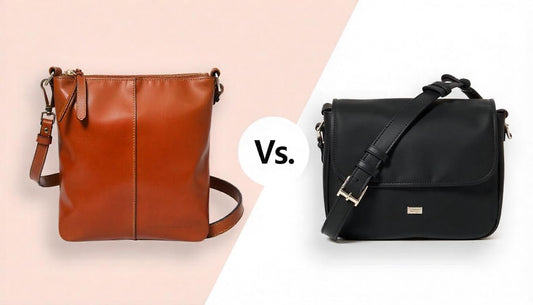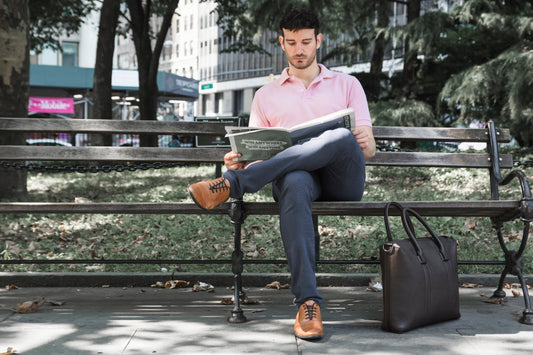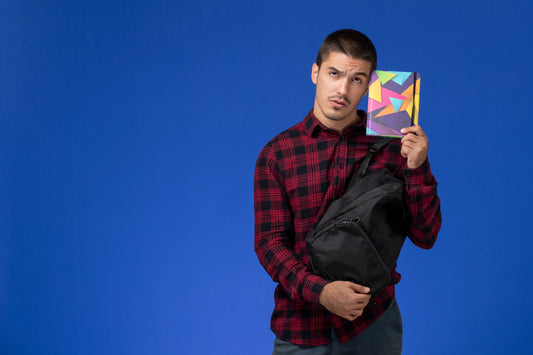
10 Types of Handbag Fabrics and Materials in 2025
Ever picked a handbag just because it looked good, only to realize it didn’t feel right, didn’t last, or didn’t match your values?
In 2025, handbag materials go far beyond just style. They influence comfort, durability, sustainability, and even self-expression. Whether you’re shopping for a go-to everyday tote, a sleek evening clutch, or a vacation-ready crossbody understanding handbag fabrics is essential.
At Ya Maleko, we design with purpose. Every material we choose reflects not just fashion-forward aesthetics, but conscious living, longevity, and refined craftsmanship.
Here’s your ultimate guide to the 10 most popular handbag materials in 2025 including pros, cons.
Genuine Leather

Genuine leather is a natural material made from animal hides most commonly cowhide that has been tanned and processed to create a durable and flexible fabric. Unlike synthetic alternatives, genuine leather retains the unique texture and markings of the original hide, offering a rich and timeless look.
It’s known for its strength, longevity, and ability to develop a beautiful patina over time, which adds character with age. Genuine leather can be finished in various ways (full-grain, top-grain, corrected grain) to suit different styles and uses. In fashion, it's a premium choice for bags, jackets, shoes, and accessories.
Pros of Genuine Leather
- Durability: Can last for decades with proper care.
- Timeless Look: Ages beautifully with a rich patina.
- Breathability: Allows airflow, reducing odor and moisture buildup.
- Luxury Appeal: Associated with premium craftsmanship and quality.
Cons of Genuine Leather
- Cost: More expensive than synthetic options.
- Maintenance: Requires conditioning and care to prevent drying/cracking.
- Not Vegan-Friendly: Made from animal hides.
- Sensitive to Water: Can stain or warp if not treated.
Vegan Leather (PU & Plant-Based Alternatives)

Vegan leather is a cruelty-free alternative to traditional animal leather, designed to mimic its look and feel without using animal products. The most common type is PU (polyurethane) leather, a synthetic material made by coating a fabric base with a flexible plastic layer. Recently, plant-based vegan leathers have gained popularity these use natural sources like mushrooms, cactus, or apples to create sustainable, biodegradable materials.
These alternatives offer a similar texture and durability to real leather but with less environmental impact (depending on the production process). Vegan leather is widely used in fashion for those seeking ethical and eco-conscious choices without sacrificing style or quality.
Pros of Vegan Leather
- Cruelty-Free: No animals are harmed in production.
- Affordable: Generally less expensive than genuine leather.
- Versatile: Available in a wide range of colors, textures, and finishes.
- Lightweight: Easier to maintain and carry compared to some heavy leathers.
Cons of Vegan Leather
- Durability: Typically less long-lasting than genuine leather, especially lower-quality PU.
- Environmental Impact: Some synthetic types (especially PU) are plastic-based and not biodegradable.
- Breathability: Does not breathe as well, which can affect comfort and longevity.
- Aging: May crack or peel over time rather than developing a patina like real leather.
Canvas

Canvas is a sturdy, plain-woven fabric typically made from cotton or linen fibers. Known for its durability and rugged texture, canvas has been a favorite for bags and totes for decades. It can be left natural or treated with wax or coatings to increase water resistance and stiffness, making it versatile for everyday use. Canvas offers a casual, timeless appeal and is lightweight compared to many leather alternatives.
Its breathable nature makes it comfortable for carrying heavier loads, and it can be easily cleaned or even machine-washed in some cases. Popular among eco-conscious consumers, canvas is often used in sustainable fashion due to its natural origins and biodegradability. Whether for a beach bag, backpack, or shopper tote, canvas provides a practical yet stylish choice.
Pros of Canvas
- Durability: Resistant to wear and tear, perfect for daily use.
- Lightweight: Easy to carry even when filled.
- Eco-friendly: Natural fibers that are biodegradable and often organic.
- Versatility: Can be dyed or printed with various patterns and colors.
- Easy Maintenance: Washable and quick to dry.
Cons of Canvas
- Water Absorption: Can soak up water unless treated, which may cause stains or odor.
- Stains Easily: Susceptible to dirt and requires regular cleaning.
- Less Formal: Casual look may not suit all occasions.
- Can Fray: Edges may wear out without proper finishing.
Denim

Denim is a durable cotton twill fabric characterized by its diagonal ribbing pattern, traditionally dyed with indigo to create the classic blue color. Originally used for workwear due to its toughness, denim has become a versatile material in fashion, including handbags.
Its sturdy construction makes it ideal for casual, everyday bags that can withstand wear and tear. Denim handbags often feature a relaxed, street-style aesthetic, appealing to those who prefer a laid-back, timeless look. In 2025, sustainability trends have pushed for upcycled and organic denim options, reducing environmental impact while maintaining style and durability.
Pros of Denim Handbags
- Durability: Strong weave resists tears and abrasions.
- Style Versatility: Casual yet trendy; pairs well with many outfits.
- Sustainable Options: Upcycled denim reduces waste.
- Easy Maintenance: Usually machine-washable or spot-cleanable.
Cons of Denim Handbags
- Fading: Color may fade with prolonged sun exposure.
- Water Sensitivity: Not naturally waterproof; can stain or soak.
- Texture: Rougher feel compared to smooth fabrics.
- Limited Formal Use: Less suited for elegant or formal occasions.
Nylon

Nylon is a synthetic fabric made from petroleum-based polymers, known for its exceptional strength and flexibility. Introduced in the 1930s, nylon quickly became popular for its durability, lightweight nature, and resistance to wear and tear. In handbags, nylon is favored for its water resistance and ability to maintain shape without adding bulk. It is commonly used in sporty, casual, and travel-friendly bags due to its easy-care properties and resilience against scratches and stains.
However, traditional nylon is derived from non-renewable resources and isn’t biodegradable, raising sustainability concerns. In recent years, recycled nylon made from plastic waste has gained popularity as an eco-friendlier alternative. Overall, nylon offers a practical, budget-friendly option that balances style and performance for everyday use.
Pros of Nylon
- Durable and Strong: Resistant to abrasions and tearing, perfect for active lifestyles.
- Water-Resistant: Helps protect belongings from light rain and spills.
- Lightweight: Comfortable to carry without adding extra weight.
- Easy to Clean: Can often be wiped down or machine washed.
Cons of Nylon
- Environmental Impact: Typically made from petroleum and not biodegradable.
- Less Luxurious: Has a more casual look compared to leather or suede.
- Can Fade: Prolonged sun exposure may cause color fading.
Polyester

Polyester is a synthetic fiber made from petroleum-based products, widely used in the fashion industry due to its versatility and durability. It is known for its strength, wrinkle resistance, and ability to retain shape and color over time.
Polyester fabric is often blended with natural fibers like cotton to enhance durability and reduce shrinkage. In handbag production, polyester offers a lightweight, affordable, and water-resistant option, making it ideal for casual and everyday bags.
Additionally, advancements in recycling technology have made recycled polyester (rPET) increasingly popular, supporting sustainability by repurposing plastic waste. Despite being synthetic, polyester’s easy maintenance and resistance to stretching or shrinking make it a practical material choice for various handbag styles.
Pros of Polyester
- Durable and Strong: Resistant to wear and tear, making it long-lasting.
- Wrinkle and Shrink Resistant: Maintains its shape and appearance after use.
- Lightweight: Adds minimal weight to handbags, improving comfort.
- Water-Resistant: Offers protection against moisture and stains.
- Cost-Effective: Generally more affordable than natural fibers.
- Recyclable Options: Increasing availability of recycled polyester supports sustainability.
Cons of Polyester
- Non-Breathable: Can trap heat and moisture, less comfortable for some uses.
- Environmental Impact: Made from non-renewable petroleum and can take years to decompose.
- Less Luxurious Feel: Lacks the softness and prestige of natural fabrics like leather or cotton.
- Prone to Static: Can attract lint and dust easily.
Velvet

Velvet is a luxurious fabric characterized by its soft, dense pile and smooth texture, traditionally made from silk but now also crafted from cotton, polyester, and other synthetic fibers. Its unique weaving technique creates a distinctive plush surface that reflects light beautifully, giving velvet its signature rich sheen and depth. Velvet is widely used in fashion for creating elegant garments and accessories, including handbags, where it adds a touch of sophistication and tactile appeal.
In 2025, velvet remains popular for special occasion bags due to its opulent appearance and ability to elevate any outfit. However, its delicate nature requires careful handling and maintenance to preserve its lush look over time.
Pros of Velvet
- Elegant Appearance: Offers a rich, luxurious look perfect for evening or formal bags.
- Soft Texture: Provides a plush, comfortable feel.
- Versatile Colors: Absorbs dyes well, resulting in deep, vibrant hues.
Cons of Velvet
- Delicate Fabric: Prone to crushing and marks from pressure or folding.
- High Maintenance: Requires gentle cleaning, often dry cleaning only.
- Attracts Dust: Can collect lint and pet hair easily.
Jute

Jute is a natural fiber obtained from the stalks of the jute plant, primarily grown in India and Bangladesh. Known for its coarse texture and earthy tones, jute is widely used in making eco-friendly bags, rugs, and upholstery. It is biodegradable and renewable, making it a sustainable choice for handbag materials.
Jute fabric is breathable and has a rustic, natural charm that fits well with casual and boho styles. However, it is less flexible than some other fabrics and can feel rough to the touch. Due to its natural fibers, jute may absorb moisture and is prone to fraying if not properly treated.
Pros of Jute
- Eco-Friendly: Biodegradable and sustainably harvested
- Durable: Strong fibers suitable for everyday use
- Affordable: Cost-effective compared to luxury materials
- Unique Aesthetic: Rustic, natural look perfect for casual styles
Cons of Jute
- Rough Texture: Less soft compared to fabrics like cotton or leather
- Moisture Sensitive: Can absorb water and develop mildew
- Limited Flexibility: Stiffness affects handbag shapes
- Prone to Fraying: Needs proper finishing to last longer
Jacquard

Jacquard is a type of fabric characterized by intricate woven patterns created using a special loom called the Jacquard loom. Unlike printed or embroidered textiles, the patterns in Jacquard fabric are woven directly into the material, allowing for complex, textured designs such as florals, geometrics, and damasks.
Originally invented in the early 19th century, Jacquard weaving revolutionized textile production by automating the process of creating detailed patterns. Today, Jacquard fabrics are made from various fibers including silk, cotton, polyester, and blends, commonly used in upholstery, fashion, and handbags. The richness and durability of Jacquard make it a luxurious choice, lending sophistication and texture to any accessory or garment.
Pros of Jacquard Fabric
- Durability: Woven patterns are long-lasting and less prone to fading compared to printed designs.
- Aesthetic Appeal: Offers rich, textured, and intricate designs that enhance visual interest.
- Versatility: Available in many fiber blends suitable for casual to formal handbags.
- Texture: Provides a tactile dimension that elevates the feel of the fabric.
Cons of Jacquard Fabric
- Cost: More expensive due to complex weaving process and materials used.
- Weight: Generally heavier than plain fabrics, which may affect handbag weight.
- Care: Requires careful cleaning to preserve pattern integrity and texture.
- Flexibility: Less flexible than simpler fabrics, limiting certain handbag designs.
Cactus Leather

Cactus leather is an innovative, eco-friendly material made from the mature leaves of the Nopal cactus (also known as prickly pear). The leaves are harvested sustainably without harming the plant, then cleaned, dried, and transformed into a durable, flexible fabric that closely resembles traditional leather.
This plant-based leather alternative offers a cruelty-free, biodegradable option that requires significantly less water and chemicals compared to conventional leather production. It’s gaining popularity in the fashion industry, especially for handbags, shoes, and accessories, due to its natural texture, breathability, and environmental benefits.
Pros of Cactus Leather
- Sustainable: Uses minimal water and no pesticides; biodegradable and renewable resource
- Cruelty-Free: Completely vegan and animal-friendly
- Durable: Resistant to scratches and water, with good longevity
- Breathable: Allows air circulation, reducing odor and moisture buildup
- Aesthetic: Natural, soft texture with a unique look
Cons of Cactus Leather
- Limited Availability: Still a niche material, not widely available worldwide
- Cost: Generally more expensive than synthetic alternatives due to production processes
- New Technology: Long-term durability is still being evaluated compared to traditional leather
- Color Options: Limited natural color range; often dyed for variety
How to Choose the Right Fabric for Your Handbag
Choosing the right handbag fabric isn’t just about style it’s about purpose, longevity, and values. Here’s how to make the right pick:
1. Consider the Purpose
Are you looking for an everyday bag or something for special occasions?
- Daily use: Opt for nylon, canvas, or polyester for durability.
- Evening events or formal wear: Choose velvet, jacquard, or genuine leather for elegance.
2. Think About Climate and Conditions
- Humid or rainy environments: Go for nylon or cactus leather—both are water-resistant.
- Dry conditions: Suede or velvet can add texture without worry.
3. Evaluate Your Ethical Preferences
- If you're vegan or eco-conscious, prioritize vegan leather, cactus leather, jute, or recycled fabrics.
- Prefer a classic material? Choose ethically sourced genuine leather for longevity and luxury.
4. Match Your Wardrobe
- Neutral fabrics like canvas, denim, and leather blend well with most outfits, while jacquard or velvet can be statement-makers for minimal wardrobes.
5. Check for Maintenance Needs
- Want low maintenance? Pick nylon, polyester, or jute.
- Okay with occasional care? Leather and velvet offer luxury but require upkeep.
Ya Maleko Tip:
When in doubt, go for versatility. A well-crafted vegan leather tote or a neutral canvas crossbody from Ya Maleko blends function, style, and values—no matter the season.
FAQs About Handbag Materials (2025 Edition)
1. Which handbag material is the most durable?
Genuine leather and jacquard fabric offer excellent durability when cared for properly.
2. What are the most sustainable handbag materials?
Jute, cactus leather, recycled polyester, and organic canvas are leading eco-friendly options.
3. Is vegan leather actually eco-friendly?
It depends on the base. PU leather is better than PVC, and plant-based vegan leathers (like cactus leather) are even more sustainable.
4. What is the best material for an all-weather handbag?
Nylon and cactus leather are water-resistant and ideal for year-round use.
5. Does Ya Maleko use these materials?
Absolutely. At Ya Maleko, we prioritize sustainable, cruelty-free, and long-lasting materials like cactus leather, jute, denim, and ethical leather in our handbag collections.
Conclusion
The world of handbag materials is richer and more innovative than ever. In 2025, it's no longer just about choosing a bag for its look—it's about selecting a fabric that aligns with your lifestyle, ethics, and fashion sense.
At Ya Maleko, we design bags with you in mind—whether you're drawn to the resilience of canvas, the luxury of velvet, or the eco-conscious brilliance of cactus leather. Each material tells a story, and every Ya Maleko handbag helps you carry that story with elegance and intention.







